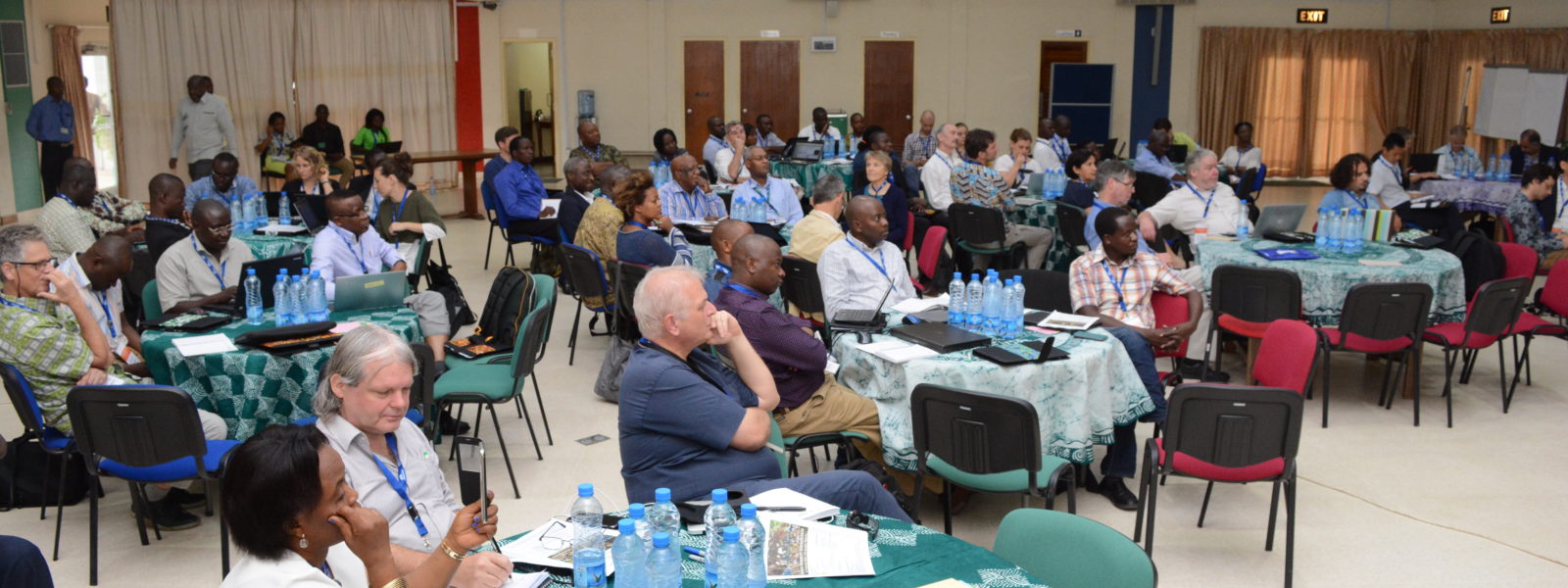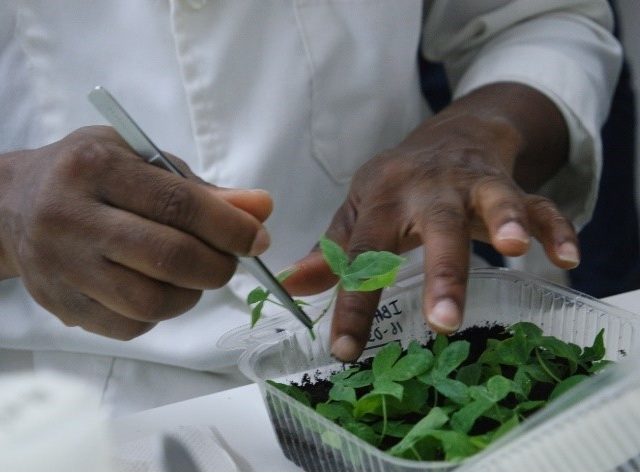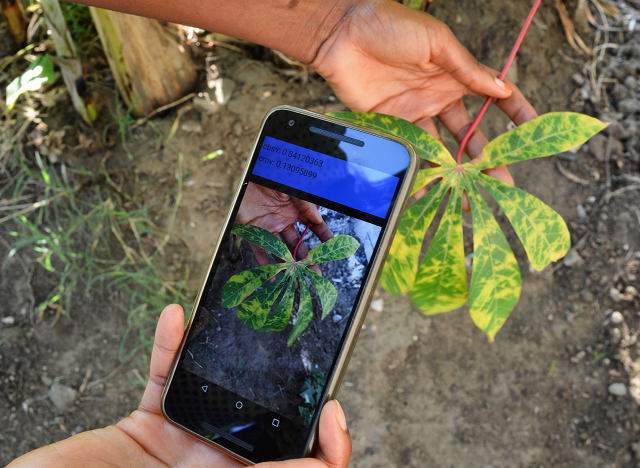Graham Thiele, RTB Program Director, shares his insights and reflections from the Systems Research Maketplace event, which took place earlier this month.
As we prepare for the second phase of CGIAR Research Programs (CRPs) in 2017, this is an opportune time to reflect on, and learn from, the approaches our programs have taken during their first phase. In particular, as the programs shift from a commodity focus to an agri-food systems (AFS) approach, it’s critical that we share the learning from the systems CRPs of the first phase and the products they produced, which could be valuable in the next cycle.
This was precisely the rationale behind the recent Systems Research Marketplace event, which I attended in Ibadan, Nigeria from 15 – 17 November – jointly organized by the CGIAR Research Program on Integrated Systems for the Humidtropics and the Forum for Agricultural Research in Africa (FARA). During the meeting, we heard an overview of progress by the systems CRPs and reflections on how to include systems approaches during the second cycle of CRPs from 2017.
The highlight for me was the ‘World Café’, an interactive workshop space where many of the tools and concepts developed by systems programs were shared. Small groups of researchers, or prospective users, rotated around poster presentations by the tool developers for an interactive exchange of views. At the end of the World Café users provided feedback on which tools they intended to use in their research programs and why – “what is in your shopping basket?”
I was invited to prepare a short perspective in the meeting on what the second cycle of CRPs could learn from the ‘Marketplace’ of approaches and tools presented.
The first question I asked was “Do we need systems tools?”
The evidence from what we saw in the World Cafe is: “Yes, absolutely!” We saw many outstanding tools and concepts that have been developed and refined through CGIAR’s research programs, including:
- Situational analysis for targeting
- Rapid Appraisal of Agricultural Innovation Systems
- Nutrition Synthesis Analysis
- Gender norms and agricultural innovation
- Using a Theory of Scaling to guide decision making
- Tools for systems analysis
- Community visioning in Foresight analysis
- Farmer decision making toolkit
- Crop enterprises combination for sustainable investment
- Motivation and barriers to adoption of sustainable intensification
- Participatory Video for inclusive agricultural research for development
- And many others!
Many of these methods help to engage with broader groups of stakeholders, and make our thinking less ’researcher centric’. It’s also clear that going to scale will require a heavy investment in capacity development for facilitators and action agents. So I was especially excited to see resources for building capacity for scaling – for example The Blended Learning Program.

Men participate in a focus group discussion in Uganda to understand how women and men adopt and benefit from innovations. Photo A.Rietfeld
The second question I asked was “What do we need to do next with this rich legacy of tools?”
I could see a number of next steps:
- Sifting through and organizing the ‘legacy’ systems tools for use by the second cycle CRPs.
- Better characterization of the use and status of tools:
- Were they fresh into print for the marketplace event?
- In validation? (How many cases)
- Are they mature – widely adopted with significant numbers of users?
- Systematically document and incorporate user feedback around these tools – crowd sourced/on line.
- Not just “do users want a particular tool?” but:
- Why?
- How do we address heterogeneity among users?
- What more do you want?
- What features don’t you like as a user?
- Identifying repositories for the longer run – including user data.
- Decentralized approaches cross-CRP access and co-development systems tools.
The third question I asked was “What’s the evidence for the theory of change of innovation and research for development (R4D) platforms and their linked approaches and tools?”
I recognize the challenges that some system CRPs faced in meeting certain criteria for evidence, considering they only had around two to three years of implementation to make a difference. I suggested:
- Provide the best achievable evidence at the point along impact pathway you reached.
- Don’t need to show the outcomes at the higher Intermediate Development Outcome or Sustainable Development Goal level
- Focus on clearly documented changes at the next user/boundary partner or research outcome level
- Be open to share what didn’t work.
This is all essential information to help the second cycle CRPs as future users and change agents of systems tools and approaches to do better. We should also draw lessons from the systems CRPs about how to improve institutional arrangements within CGIAR to make systems research more effective. Conducting systems research has implications for research governance (e.g. staffing, modes of research agenda setting, place-based funding mechanisms, M&E indicators, meta theories of change on the role of research, etc.) and these may require some close scrutiny.
I did hear a few good examples of evidence of theories of change presented in the Marketplace event including:
- Actual and espoused theory of change of systems research program implementation.
- The Consortium for Improving Agriculture-based Livelihoods in Central Africa (CIALCA) impact study
- Analysis of outputs and outcomes of three innovation platforms based at field sites, which used an integrated and systemic analytical framework that allowed for the identification of strategic issues, entry points, theories of change and impact pathways, e.g. Nicaragua.
However, it would be great to have a richer and deeper evidence base going forward.
The fourth question I asked was “What do we need to do next to build on this legacy by supporting ongoing innovation processes and partnerships?”
I proposed the following:
- Consistent geographic inventory of work under systems CRPs related to particular AFS-CRPs.
- Link this to site integration, processes and priorities (how important are AFS crops in the different sites?)
- Identifying entry points of legacy of systems work with AFS-CRPs commodity work.
-
- E.g. During the Humidtropics MSP in the Côte d’Ivoire, the program trained women farmers in a largely cocoa producing region to process Attiéké product from cassava, providing market opportunities and enhancing cassava varietal diversification and adoption. This area strongly maps into the RTB cassava processing cluster targeting small and medium enterprises
The Marketplace demonstrated the potential value added from more closely integrating systems approaches into the commodity focus of first phase CRPs. In particular, these approaches and tools can enhance scaling and keep our focus on improving livelihoods and gender equity. These are valuable lesson that RTB will be building on as it evolves into a fully-fledged Agri-Food System CRP. New partnerships have been initiated to effectively build these systems and scaling elements in RTB from January 2017 onwards.






